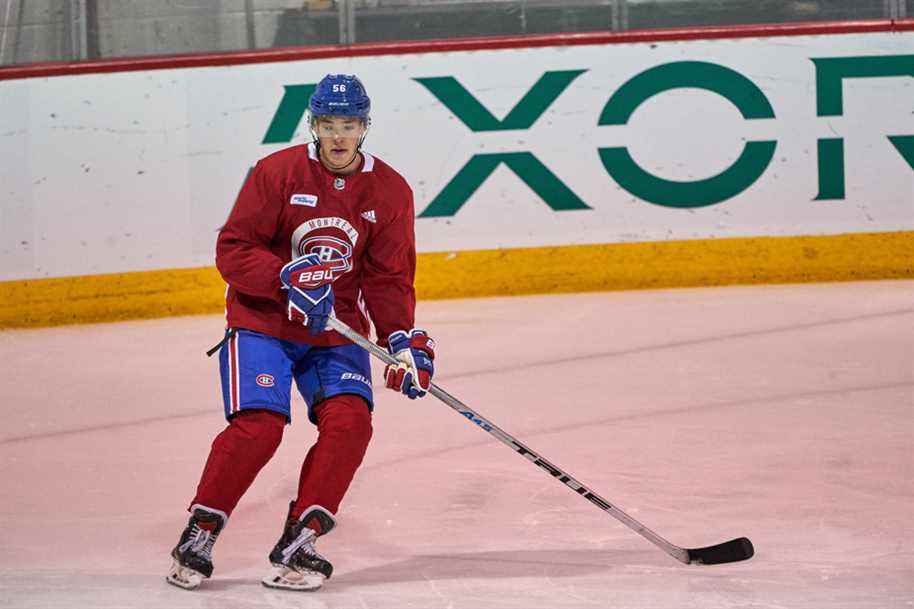Posted at 1:00 p.m.
Any news from Jordan Harris?
Could we get an idea of Jordan Harris’ schedule for the next few weeks. When is his season likely to end in the NCAA?
Francis Veilleux
Response from Guillaume Lefrancois
Northeastern’s final game of the season was Saturday. The Hockey East conference playoff tournament then gets underway on Wednesday. The No. 1-ranked Huskies will have a bye to the quarterfinals and begin their tournament on March 12. This tournament consists of knockout matches, so one loss and it’s over. If the Huskies win the tournament, they will then advance to the NCAA National Championship, the final of which is April 9. If they don’t win the Hockey East title, however, it would be a big surprise if they were among the teams “drafted” to compete in the national championship, we are told.
The quarter coefficient
How is the NFL Quarterback Efficiency Coefficient calculated?
Gaetan Lemieux
Reply from Nicholas Richard
The effectiveness coefficient of a quarterback is the result of a rather complex calculation that includes five equally complex steps. It involves the percentage of completed passes, the number of passing yards, the number of touchdown passes and the number of interceptions. The coefficient is between 0 and 158.3. Usually, the coefficient is evaluated on the cumulative data in the season. Except, to put it down to its simplest form, for a quarterback to have perfect efficiency in a single game, he would have to attempt at least 10 passes, be the victim of no interceptions, succeed at least 77.5% of his passes, have at least 11.875% of his passes converted into touchdowns and accumulate at least 12.5 yards per attempted pass. The last quarterback to have a perfect ratio in a game is Tom Brady on December 26, 2020, against the Detroit Lions. Last season, Aaron Rodgers, among the starting quarterbacks, had the best efficiency coefficient with a score of 111.9.
Prevent concussions
Can you remind us of the operation of the program used by the NHL to prevent concussions in its players?
Stephanie Tremblay
Response from Katherine Harvey-Pinard
In 2016, the NHL implemented a new centralized staff of observers, who monitor all games from the player security room in New York. These “spotters,” all certified athletic trainers, can demand that a team’s medical staff remove a player from play if he shows visible signs of concussion after a direct or indirect blow to the head. Clubs that ignore this request risk a fine. Note that the officials can also order the withdrawal of a player if they notice signs of concussion in this one.
A little… hostility?
Why aren’t we seeing more hostile offers for star players? We know that it is not in the culture and that it leaves a bad impression on the team concerned. However, it seems to me that having a young and established player is better than choices whose future we do not know at all… For example, if the Tampa Bay Lightning made such an offer next year for Pierre-Luc Dubois at 7 million per year, it would cost him a choice of 1er round, a choice of 2and turn and a choice of 3and tower. All end-of-round picks. It seems to me that one in the hand is better than two in the bush. No ?
Jean-Philippe Deschenes-Gilbert
Response from Simon-Olivier Lorange
In principle, you are right. A quality established player is certainly worth their weight in gold, and the example you set is relevant. However, I will submit a few nuances. The success rate will necessarily be lower with a star player… because his original team is firmly committed to it! Especially if she was the one who drafted him and oversaw his development. The philosophy behind a hostile offer is that it must create a dilemma for the team who risk losing their player. She will ask herself: am I ready, as an organization, to spend such a sum on this specific player? The value of the player, according to his age and his potential for improvement, and the spending power of the team will therefore be taken into consideration. In the case of Jesperi Kotkaniemi, last summer, the Canadian obviously estimated that 6.1 million represented an excessive expense, both with regard to the profile of the Finn and the complex salary structure of the Canadian. The dilemma was real, and we let it go. Conversely, when the same Canadian tried to attract center Sebastian Aho in 2019, the Carolina Hurricanes’ desire to keep him was underestimated. The decision was easy to make and the offer was quickly matched. The only two players whose hostile bid hasn’t been matched in 25 years are Kotkaniemi (2021) and Dustin Penner (2007). Two good hockey players, but not big stars. So unless a team extends 12 million to Pierre-Luc Dubois, he should stay in Winnipeg.
Answer from Mathias Brunet
As you say so well, it’s not in the culture and it leaves a bad impression. Moreover, the Hurricanes did not fail to take revenge by extracting from the Canadian one of his centers of the future after having seen the Canadian target Sebastian Aho a few years earlier. The general manager also wants to protect his relations with his colleagues and generally avoids doing so. Not to mention that in the vast majority of cases, the teams manage to keep their young stars and equalize the offer to maintain their rights on them.
